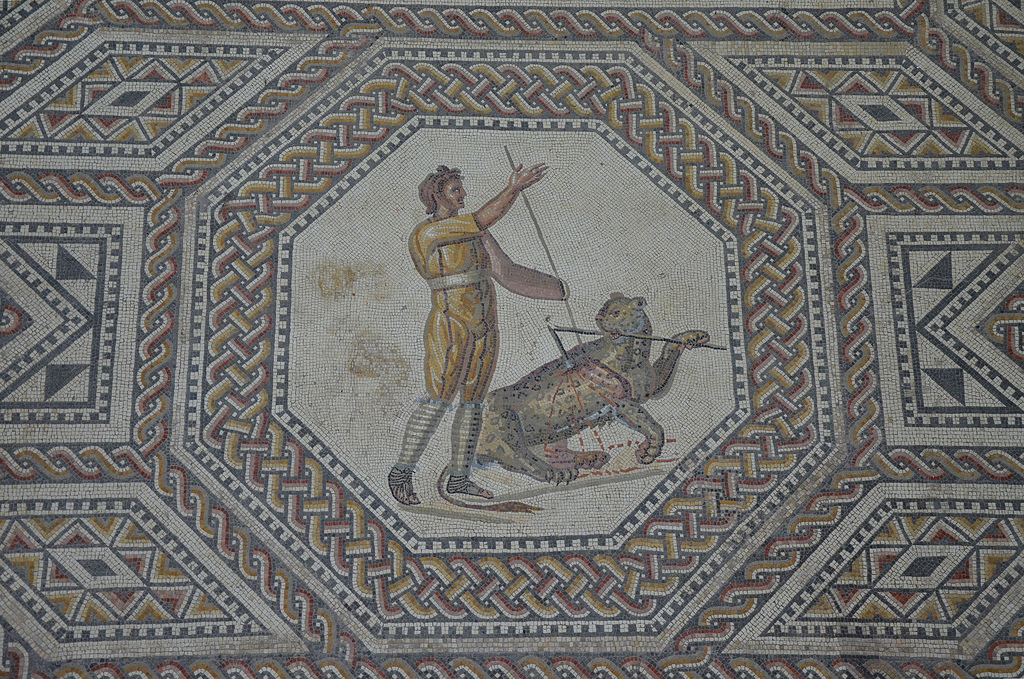Located in the village of Nennig in the delightful Upper Moselle Valley, the Roman Villa Nennig (German: Römische Villa Nennig) houses a richly illustrated gladiatorial mosaic, one of the most important Roman artefacts north of the Alps. Protected by a dedicated building built about 150 years ago and covering an area of roughly 160m2, the mosaic vividly portrays musicians, hunting scenes and gladiatorial contests.
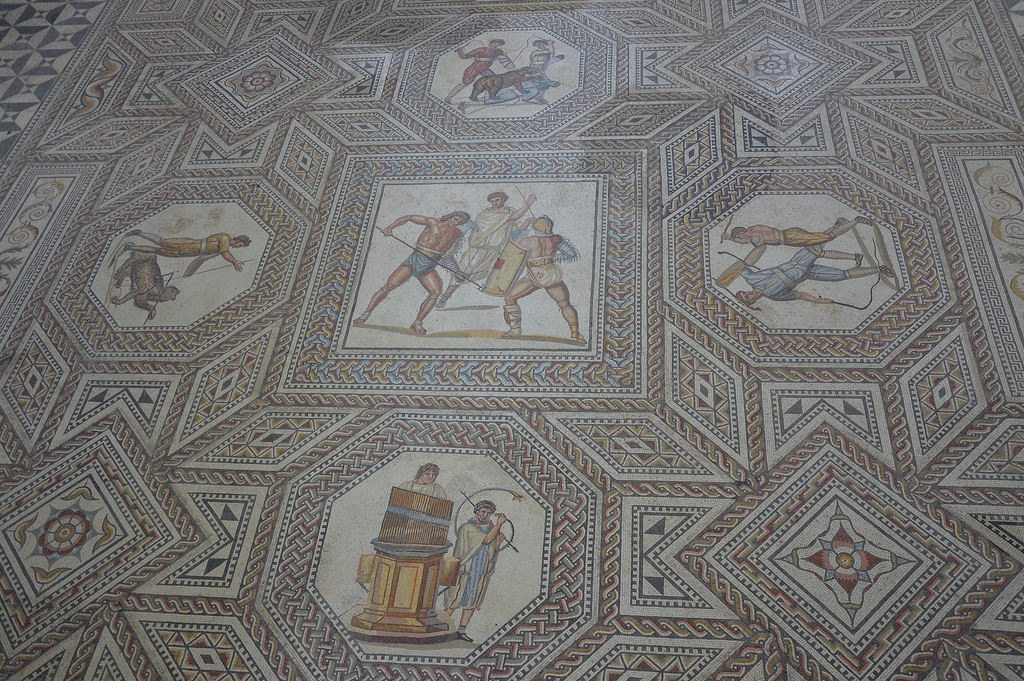
Coordinates: 49° 31′ 44.56″ N 6° 23′ 5.03″ E
In the 3rd century AD the mosaic paved the atrium (reception hall) of a large villa urbana which a wealthy Roman had built on the road between Divodurum (Metz) and Augusta Treverorum (Trier). The mosaic later disappeared below ground until it was discovered by chance by a farmer in 1852. The excavations conducted between 1866 and 1876 revealed only a part of the once splendid and extensive ground as well as the foundation walls of the imposing central building and several adjacent buildings. A coin of Commodus (struck ca. 192) found under the mosaic during the restorations of 1960 dates the construction of the villa to the end of the 2nd century or the beginning of the 3rd century AD.
The villa complex included a bath house with heated rooms, small pavilions and magnificent gardens. A two-storied colonnaded portico (140 m long) flanked by three-storied tower wings with massive walls ran across the façade of the main building. Beyond these, at either side, two temple-pedimented structures flanked the villa.

Walking around the interior of the protecting building, the entire scene of the mosaic can be viewed from a raised platform. The mosaic comprises of seven octagonal medallions surrounding two central quadrangles, one decorated with a scene of gladiatorial combat, the other occupied by a marble basin. An elaborate pattern of geometrical designs borders each scene.
PORTFOLIO
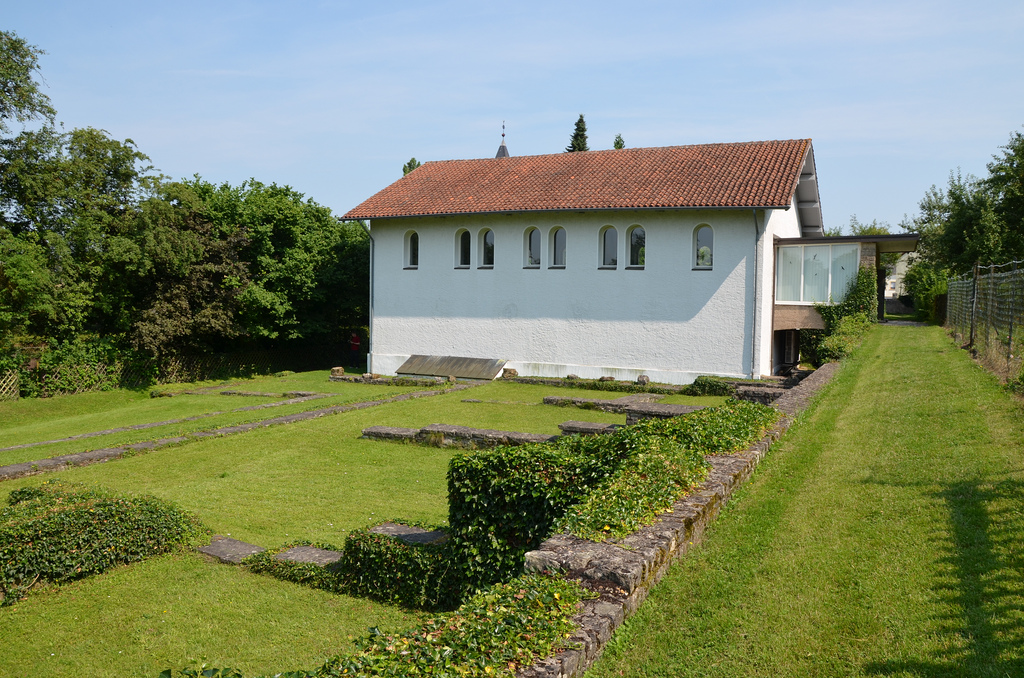
The remains of the Roman villa in Nennig. Photo © Carole Raddato.

The foundation remains of the Roman villa in Nennig. Photo © Carole Raddato.

Medallion depicting a organist and horn player. The beginning and the end of the Roman games were often accompanied by music. The mosaicist has depicted the water organ (hydraulis), know in the ancient world since 300 BC. The 27 organ-pipes rest on a hexagonal podium which also serves to store water for the organ. The organist plays the keyboard situated behind the pipes. The curved horn, which is braced and supported on the shoulder of the player by a cross bar, is a cornu. Photo © Carole Raddato.
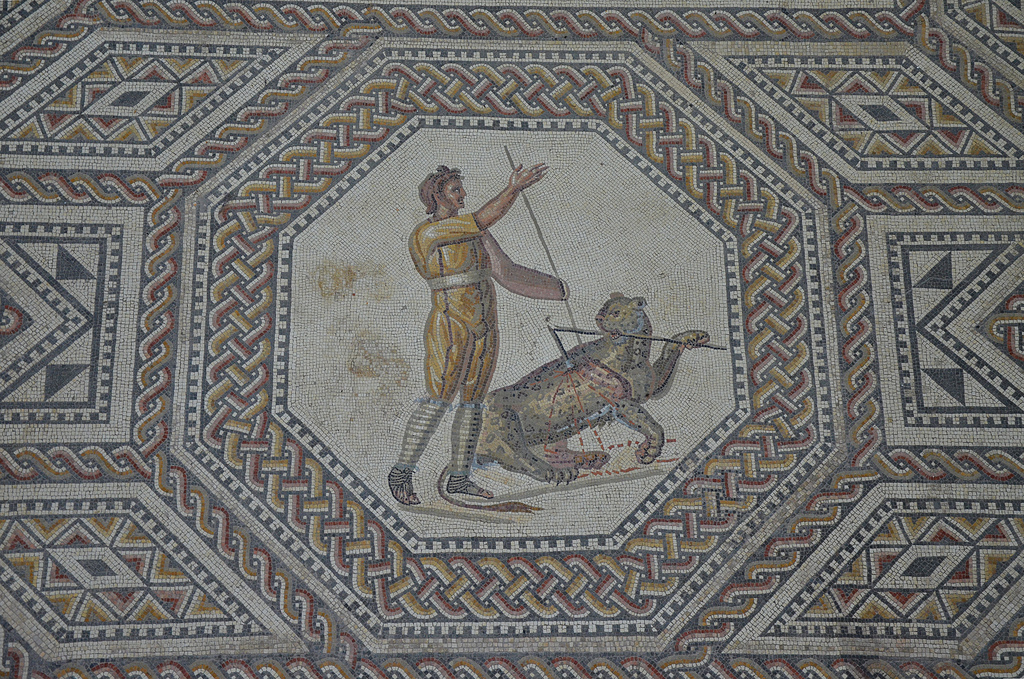
Octagonal medallion depicting a Javelin thrower with a panther. The games usually began with venationes (beast hunts) and bestiarii (beast fighting) gladiators. Here the beast is wounded by the venator’s spear and tries to pull the javelin out. It succeeds only in breaking it in half. Delighted with his conquest, the proud venator received the acclamation of the crowd. Photo © Carole Raddato.

Octagonal medallion depicting a tiger attacking a wild ass. Another variety of venatio consisted of pitting animals against animals. The Romans loved to see large and dangerous animals fighting each other. In this scene, a wild ass, laid low by blows from the tiger’s paw, has fallen to the ground. Standing proudly, the victor of this unmatched contest looks around before commencing his bloody feast. Photo © Carole Raddato.

Octagon depicting a resentful lion being led away by his aged keeper. This was the first of the illustrated panels to be discovered in 1852. Photo © Carole Raddato.

Octagonal medallion depicting two rogues trying to drive the animal off by lashes from their whips. In this panel, which is in the center of the mosaic, a bear has thrown one of his tormentors to the ground, while the other two attempt to drive the animal off by lashes from their whips. The venatores are wearing knee-breeches and very broad belts in addition to the leg wrappings. Later their clothing was reduced to the tunica. Photo © Carole Raddato.
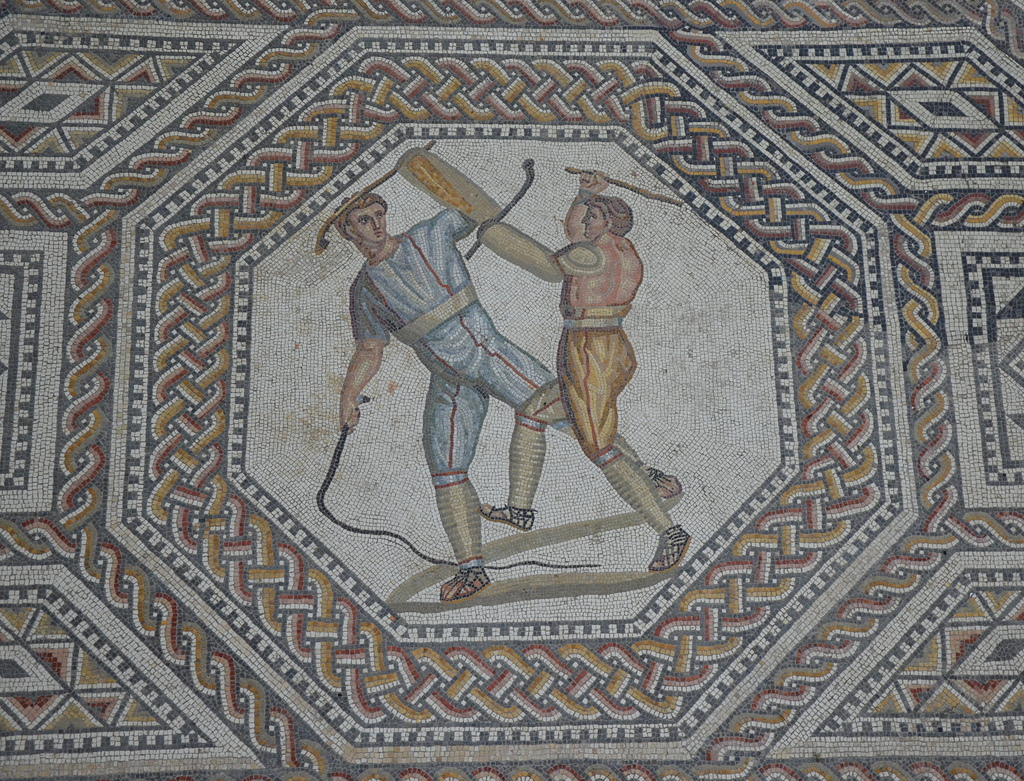
Octagonal medallion depicting two combatants attacking one another with cudgels and a whip. The introduction to the gladiatorial contests consisted of a prolusio (prelude). The various pairs fought with blunted weapons, giving the foretaste of their skills. Photo © Carole Raddato.

Octagonal medallion depicting a Retiarus armed with trident and dagger fighting against a Secutor while a referee looks on. In the afternoon came the high point of the games, individual gladiatorial combats. These were usually matches between gladiators with different types of armor and fighting styles, supervised by a referee (summa rudis). This scene represents simultaneously the highlight and the conclusion of the games. Photo © Carole Raddato.
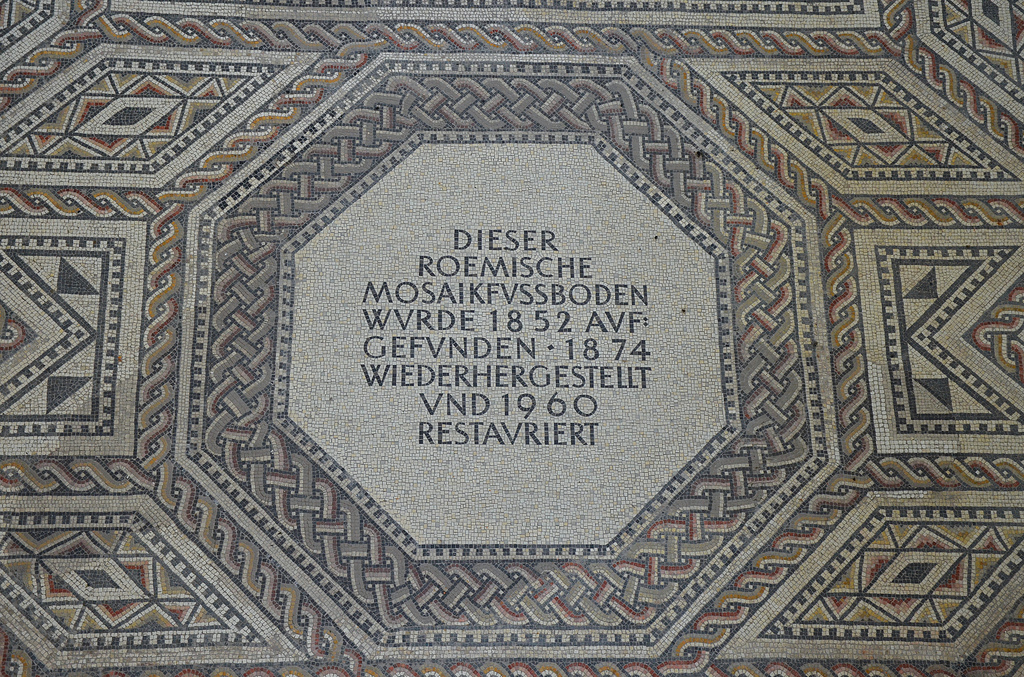
Following restorations in 1960/61 the following text was inserted: This Roman mosaic floor was discovered in 1852, reconstructed in 1874 and restored in 1960. The original medallion has been destroyed, perhaps intentionally, by later occupants of the villa. Photo © Carole Raddato.

General view of the Nennig Mosaic. Photo © Carole Raddato.
 The Saarland and Moselle Valley’s ancient Roman heritage has a lot to offer to tourists and scholars alike. More than 120 antique sights along the Moselle and the Saar rivers, the Saarland and Luxembourg are testament to the Gallo-Roman era north of the Alps (further information here).
The Saarland and Moselle Valley’s ancient Roman heritage has a lot to offer to tourists and scholars alike. More than 120 antique sights along the Moselle and the Saar rivers, the Saarland and Luxembourg are testament to the Gallo-Roman era north of the Alps (further information here).
Opening hours:
April – September: Tuesday to Sunday 8:30 am – 12 noon and 1 – 6 pm
October, November and March: Tuesday to Sunday 9 – 11:30 am and 1 – 4:30 pm
Closed from December to February and on Mondays
Website: http://nennig.de/sehenw/nennig.html
Sources:
- The Roman Mosaic at Nennig: A Brief Guide (n.d.) by Reinhard Schindler
- Eckart Köhne, Cornelia Ewigleben, Ralph Jackson, Gladiators and Caesars: The Power of Spectacle in Ancient Rome. Berkeley: University of California Press, 2000
Article originally posted on Following Hadrian Photography; reposted with permission.
